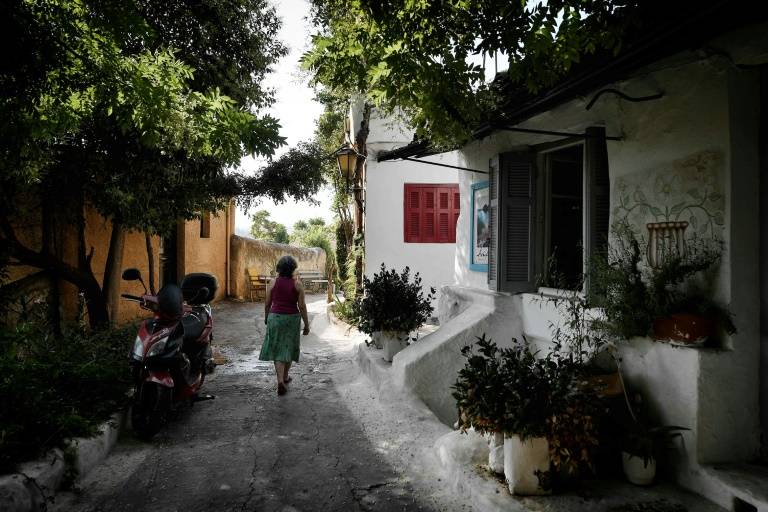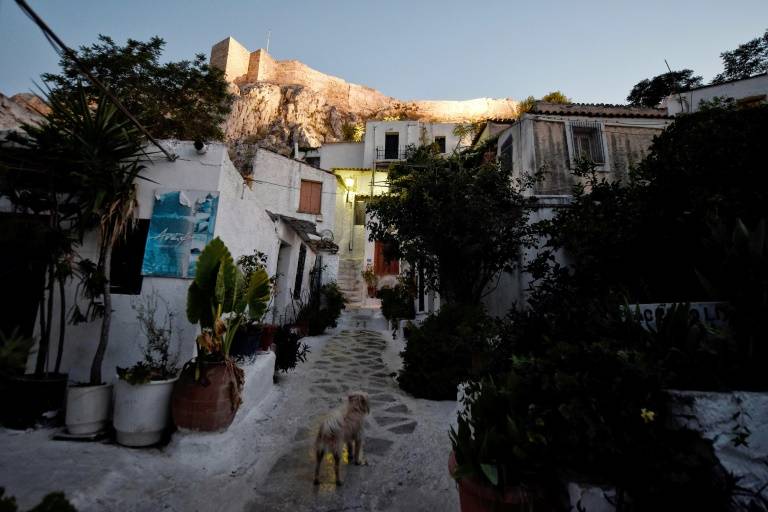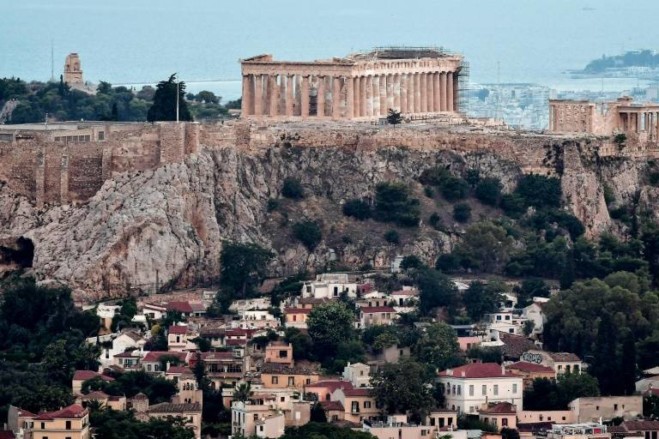At the foot of the Acropolis, a cycladic district stands the test of time
July 23rd, 2018 José Sitbon No Comment Destination 3949 views
Anafiotika district located in the archaeological area of the Acropolis
White houses, windows lilliputian as it is the tradition in the windy Cyclades of the Aegean Sea, this hundred stone houses of 50 m2, all simple, are built on the north-east slope of the ancient site of the Acropolis and its illustrious temples as the Parthenon, high tourist place of the country.
 Anafiotika is one of the old working class districts in the historic centre of modern Athens, built in 1834.
Anafiotika is one of the old working class districts in the historic centre of modern Athens, built in 1834.
« At the time, workers from the Cyclades in the Aegean Sea and especially from the island of Anafi, known for its stonemasons, were called by King Otto I to rebuild Athens, capital of the then young Greek state.
Athens had indeed been destroyed after the war of independence (1821-1829) against the Ottomans and « these workers had then to build the official buildings.
To house their families, the Anafiotes then built their houses in the style of their island, and at the limit of legality, at the foot of the Acropolis rock and at the edge of the historical and very touristic center of Plaka.
« Anafiotika has historical value, it is a journey through time representing popular architecture with cycladic elements ».
Over the years, some of these houses have been abandoned or recovered by new tenants, and today there are few descendants of Anafiot families left.
At the end of the 1960s, the houses were integrated into the archaeological area of Athens and some twenty were demolished thirty years later to allow the restitution of the old footpath around the Acropolis, as part of the general facelift of the capital in preparation for the 2004 Summer Olympic Games.
 However, most of the district was safeguarded after being erected as an « architectural heritage » by the Ministry of Culture. A decision which implies a series of restrictions and regulations in case of renovation, any extension or additional construction having been prohibited.
However, most of the district was safeguarded after being erected as an « architectural heritage » by the Ministry of Culture. A decision which implies a series of restrictions and regulations in case of renovation, any extension or additional construction having been prohibited.
« The Ministry now owns the area and ensures the preservation of these houses, » Paklatzidi said.
But in reality, it is mainly the 40 or so families still living there who ensure the survival of the neighbourhood.
The infrastructure of most of these houses remains « basic and often does not meet modern housing criteria, but the tenacity and attachment of residents to their neighborhood » prevent their collapse, says Paraskevopoulos.
For their part, the inhabitants often struggle to cope with the bureaucracy and worry about the tendency to exploit the area, one of the most touristy in the country.
« We are fighting to maintain our houses: we must both respect the regulations with limited financial means and above all ensure to prevent any attempt to turn us into a giant Airbnb ».
The Ministry of Culture wants to be reassuring and the commercial exploitation of the zone in hotels or restaurants is prohibited.
But many residents are worried that some new tenants may give in to the temptation to make a tourist exploitation of their house, and that the assurances of the ministry remain « dead letter ».
On the same subject
New York City ready for the next FIFA World Cup
New York City Tourism + Conventions, the official tourism promotion agency for the five...
Lin Qingshui placed in immediate detention
The arrest of Lin Qingshui, mayor of Guangfu County, on January 16, 2026, is...
General blockade of the tourism sector in Tunisia
Tunisia is preparing for a day of major paralysis on Wednesday, January 21, 2026,...











